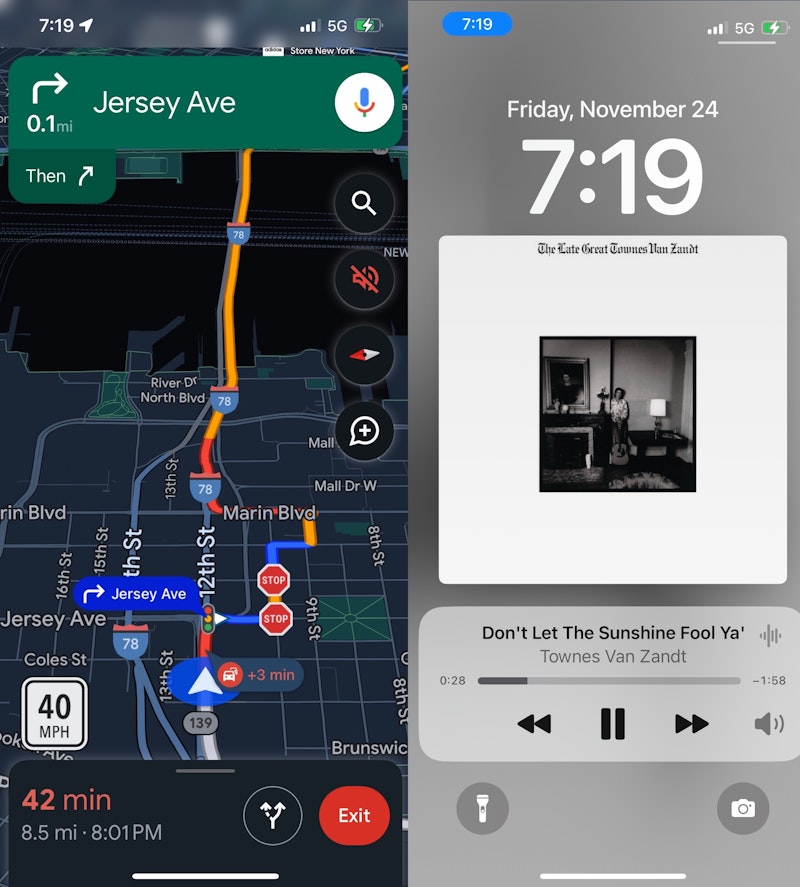I missed the turn to 295 North, pushing myself further into the southeastern sections of DC. It’s a nightmare of a city to drive around. Its veins were designed for spectacle rather than function (excluding that of military parades and motorcades). It’s no wonder that its denizens stay underground whenever they can, crisscrossing the swampy interior in their humid bunkers. The streets built to run congressmen around in carriages are ill-equipped for the saturation of automobiles, making those grandiose boulevards and quaint back alleys hostile to drivers and pedestrians alike. But the roads aren’t for the people who live in the city proper, and while I’ve seen people exiting and entering vehicles I’ve never met anyone in that town who owns a car. Someone has to—there’s nowhere to park, after all.
DC’s circulatory system, at least the one dwelling on the surface, is maintained exclusively for its most distant arteries—the world flows in from Silver Springs and Bethesda, from Fairfax and from Loudon County. The highways are built exclusively for senators, spies, and other secret personnel who have their own proprietary map system that moves them cleanly around the corridors while civilians like me bungle between interchanges. I tried turning back north, taking the first exit I saw with an overpass, implying a quick switch-around, only to find myself stuck on a run along the Department of Homeland Security’s campus—probably my worst off-ramp mistake since winding up in the Pentagon’s parking lot four-and-a-half years ago with my entire life packed into the back of my Volkswagen, and the Montana license plates and sagging suspension surely had me under the scopes.
I broke the hellish DoD loop on my third attempt, trudging for 35 miles back up the Baltimore-Washington Parkway, where the scattershot road repairs cause so many accidents that a task force could be established to fill all the potholes during the inevitable daily lane closures. Once I get that road-bug it's hard to put it away. Maybe easier in the Northeast than back in the Northwest, where driving was about landscape even more than destination. Here, the roads are pretty strict on their intention not to let you see anything along the way. On the Turnpike, you’re never allowed to see New Jersey, only their duty-free version, as if the J. Fenimore Cooper Rest Area was embedded deep inside an international airport terminal.
Sitting in the fourth-to-the-left lane in immobile Delaware traffic refocused the scale of the highway. Its sheer size becomes apparent when you’re not going at a respectable five-over the speed limit. The incredible dimensions are hard to see when you’re running a car as intended, with the machine acting as an extension of the driver’s body when they’re both properly focused and acting instinctually. Humans, compared to what we’ve gotten really good at building and forgetting to maintain, are small.
I woke up on a couch I didn’t know existed before arriving in town, and gave a college friend a ride to work (a rare New York City experience, I like to think). I’ve always liked driving in New York, especially in Manhattan—it feels perverse. Like DC, its veins run underground, millions moved in their vast, primordial caves. And also like DC, there’s plenty of cars on the road, but no one knows who they belong to. Nobody has met a New York City car-person, but they have to be here somewhere. I saw a pair park outside a glassy liquor store with bold fonts, the woman running inside while the man idled in the SUV. Unlike the DC commuters, they likely live much closer—but where? Why would they drive instead of taking the subway? The bus? Walk? They’re as mysterious a class (and perhaps also members) of those many that reside in the many metallic apartments that unmistakably pop up in every US metropolis that has a growing economy. People come in and out, all in the same Arc’teryx puffy and Carhart, but Lord knows where they go or what they do, seeming more like patterns than people in the increasingly decoupled-from-reality New York aesthetic.
The East River is oddly quiet under the shadow of those towering new apartments—their reflective surfaces also apparently absorbing the sounds of Greenpoint. You could forget there’s a city outside of it, not just a matte painting made of forced perspective. If I squint I can hear the cars running along FDR Dr. At this distance, it’s not the sounds of motors that travel, it's the rubber pushing on the road; it’s one of the biggest factors towards noise pollution. People forget that the immediacy of an engine or horn isn’t what makes the waterfall sounds of a road, it’s the force exerted on the ground by something heavy pulled across it.

